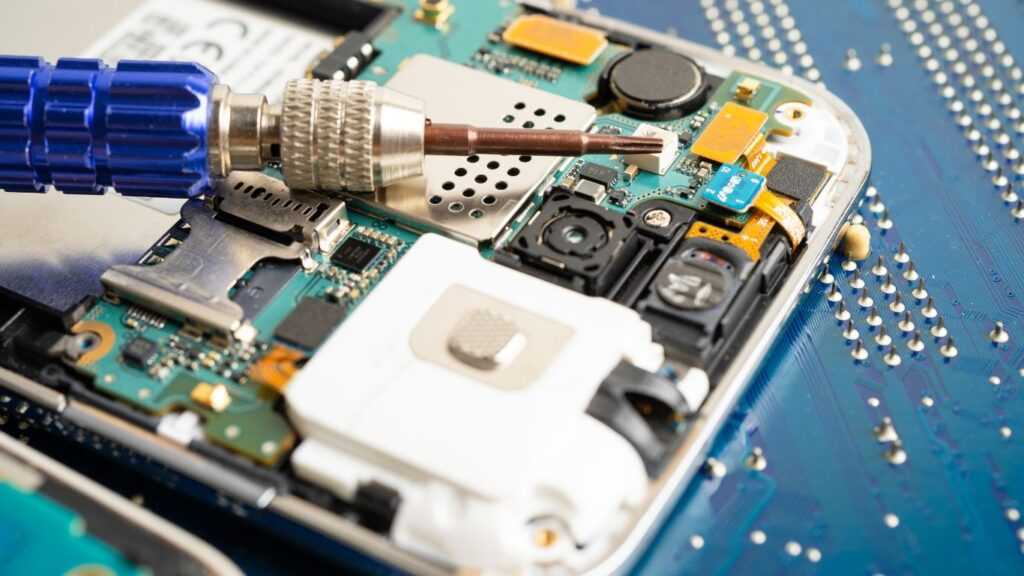Nanotechnology might sound like something out of a sci-fi movie, but it’s making waves in the real world. From medicine to electronics, these tiny innovations are revolutionizing industries in ways we never thought possible. Imagine materials stronger than steel yet lighter than a feather or targeted drug delivery systems that treat diseases at the cellular level.
I find it fascinating how manipulating matter at the nanoscale can unlock such massive potential. With endless applications, nanotechnology is not just the future—it’s already here, transforming our lives in subtle yet significant ways. Let’s dive into this microscopic world and explore the groundbreaking advancements shaping our tomorrow.
Exploring the Basics of Nanotechnology
What Is Nanotechnology?
Nanotechnology involves manipulating matter at the atomic, molecular, and supramolecular levels. It focuses on structures with dimensions between 1 and 100 nanometers. By controlling these particles, scientists create new materials and devices with unique properties. This technology has applications in medicine, electronics, energy, and environmental protection.
The Historical Development of Nanoscale Technologies
The concept of nanotechnology dates back to physicist Richard Feynman’s 1959 lecture, “There’s Plenty of Room at the Bottom.” Feynman discussed the potential of manipulating individual atoms, setting the stage for contemporary nanotechnology. In 1981, the invention of the scanning tunneling microscope enabled scientists to visualize and manipulate individual atoms. This breakthrough marked a significant advancement in the field. In the 2000s, nanotechnology grew rapidly with the development of new fabrication techniques and materials, leading to practical applications in various industries.
Nanotechnology in Medicine
1. Drug Delivery Systems
Nanotechnology enables precise drug delivery systems targeting specific cells, enhancing treatment efficacy while minimizing side effects. For instance, nanoscale carriers (e.g., liposomes, dendrimers) can encapsulate drugs and release them at controlled rates. Researchers have developed nanocarriers to deliver chemotherapy agents directly to cancer cells, reducing damage to healthy tissues (Nature Reviews Cancer, 2019). This approach offers significant advancements in treating various diseases by improving the bioavailability and stability of therapeutics.
2. Tissue Engineering
Nanotechnology also plays a crucial role in tissue engineering by creating scaffolds that mimic the extracellular matrix. These nanostructured scaffolds support cellular growth and differentiation, aiding in tissue regeneration. For example, biodegradable nanofibers can be used to engineer skin, bone, and neural tissues (Journal of Biomedical Materials Research, 2020). This technology accelerates the healing process and contributes to developing advanced wound care solutions, ultimately improving patient outcomes.
3. Diagnostic Tools
Nanotechnology enhances the sensitivity and accuracy of diagnostic tools, enabling earlier disease detection. Nanosensors can detect biomarkers at very low concentrations, providing real-time monitoring of diseases like cancer and diabetes. For instance, gold nanoparticles are used in assays to identify specific proteins associated with Alzheimer’s disease (ACS Nano, 2018). These innovations improve early diagnosis, allowing for timely interventions and better prognosis management.
4. Antimicrobial Treatments
Nanoparticles exhibit antimicrobial properties, offering new avenues for infection control. Silver nanoparticles, for example, are effective against a broad spectrum of bacteria and viruses (International Journal of Nanomedicine, 2017). Incorporating these nanoparticles into coatings for medical devices, wound dressings, and other materials helps prevent infections and promote better health outcomes.
5. Personalized Medicine
Nanotechnology paves the way for personalized medicine by enabling the development of tailored therapies based on individual genetic and molecular profiles. Nanoscale devices can analyze a patient’s genetic information quickly and accurately, facilitating custom treatment plans that maximize therapeutic efficacy and minimize adverse effects. This personalized approach represents a significant shift in clinical practices, promising more effective and efficient healthcare solutions.
| Application | Example | Source (Year) |
|---|---|---|
| Drug Delivery Systems | Chemotherapy drugs targeting cancer cells | Nature Reviews Cancer (2019) |
| Tissue Engineering | Biodegradable nanofibers for skin regeneration | Journal of Biomedical Materials Research (2020) |
| Diagnostic Tools | Gold nanoparticles detecting Alzheimer’s proteins | ACS Nano (2018) |
| Antimicrobial Treatments | Silver nanoparticles in medical device coatings | International Journal of Nanomedicine (2017) |
| Personalized Medicine | Genetic analysis for individualized therapies | Authoritative medical research publications |
Nanotechnology’s applications in medicine emphasize its transformative potential, making substantial contributions to advancing healthcare and improving patient outcomes.
Applications in Electronics and Energy

Nanoelectronics and Computing
Nanotechnology revolutionizes electronics by enabling the production of smaller, faster, and more efficient electronic components. One key innovation, the nanoscale transistor, plays a critical role in modern computing. Traditional silicon transistors face physical limitations as they shrink, but carbon nanotubes and graphene transistors provide high conductivity and reduced heat generation.
Memory storage also benefits from nanotechnology. Innovations like resistive random-access memory (ReRAM) and nanoscale flash memory offer higher storage capacities and faster data access. These developments support the growing demands of data-intensive applications like artificial intelligence and big data analytics.
Quantum computing gains from nanotechnology too. Quantum dots, tiny semiconductor particles, enable the creation of qubits required for quantum computations. This advancement holds promise for solving complex problems beyond the capacity of classical computers.
Renewable Energy Solutions
Nanotechnology enhances renewable energy technologies by improving efficiency and reducing costs. In solar panels, nanoparticle coatings increase sunlight absorption, boosting energy conversion rates. Quantum dots used in photovoltaic cells enhance their efficiency by capturing a broader spectrum of sunlight.
Battery technology sees significant advancements with nanomaterials. Nanostructured electrodes in lithium-ion batteries improve energy density and charge/discharge rates. These improvements result in longer-lasting, faster-charging batteries, essential for electric vehicles and portable electronics.
Fuel cells benefit as well. Nanocatalysts increase the efficiency of chemical reactions in fuel cells, leading to higher energy outputs and reduced material costs. This innovation makes fuel cells more viable for a range of applications, including clean energy production and transportation.
Wind turbines incorporate nanotechnology to improve durability and efficiency. Nanocoatings on turbine blades reduce wear and increase resistance to environmental factors, extending their operational life and efficiency.
Nanotechnology’s role in electronics and energy showcases its potential to drive improvements and innovation across industries, meeting growing technological and environmental demands.
Environmental Impact of Nanotechnology
Pollution Reduction Techniques
Nanotechnology offers innovative solutions for pollution reduction. Nanocatalysts enhance the efficiency of chemical reactions, lowering the energy needed for industrial processes. For example, nanocatalysts can break down pollutants in wastewater more effectively than traditional methods. Nanoscale filters remove contaminants from air and water, capturing particles as small as 10 nanometers. This capability helps purify drinking water and reduce air pollution from industrial emissions.
Nanomaterials like titanium dioxide and zinc oxide neutralize pollutants through photocatalytic processes. When exposed to sunlight, these materials generate reactive oxygen species that decompose harmful substances. This technology is used in self-cleaning surfaces, coatings, and even in air purifiers, contributing significantly to reducing urban pollution.
Risks and Regulations
Nanotechnology poses potential risks that require regulation to ensure safety and environmental protection. Nanoparticles’ small size and high reactivity can lead to unforeseen health and environmental effects. For instance, inhaling nanoparticles might cause respiratory issues since their small size allows them to penetrate deep into lung tissue.
Regulatory bodies like the Environmental Protection Agency (EPA) and the European Chemicals Agency (ECHA) oversee the safe use of nanomaterials. These agencies require detailed risk assessments before approving new nanomaterials for widespread use. They evaluate factors such as toxicity, environmental persistence, and potential bioaccumulation. Establishing clear guidelines and standards ensures that nanotechnology advances without compromising environmental or human health.
By understanding both the benefits and potential risks, stakeholders can develop nanotechnology responsibly, maximizing positive impacts while minimizing adverse effects.
Future Prospects and Challenges
Emerging Trends and Research
- Dynamic Field: Researchers continue to uncover new applications for nanotechnology, making it a dynamic field with immense potential.
- Nanomedicine Advances: Nanoscale robots for targeted cancer therapy show promise for more effective treatments.
- Nanoelectronics: Developments in nanoelectronics enable the creation of faster, smaller, and more efficient electronic devices.
- Materials Science Innovations: Innovations like carbon nanotubes and graphene open doors for stronger, lighter materials in various industries.
Ethical Considerations and Global Impact
- Ethical and Global Impact: Nanotechnology’s rapid advancement brings ethical and global impact issues to the forefront.
- Equitable Access: Ensuring equitable access to nanotechnologies is essential to avoid exacerbating existing inequalities.
- Transparent Communication: Transparent communication about potential risks and benefits helps build public trust.
- Evolving Regulations: Regulatory frameworks must evolve to address commercial and environmental concerns.
- Global Cooperation: Global cooperation is needed to manage cross-border challenges.
- Ethical Responsibility: Balancing progress with ethical responsibility is crucial for sustainable development in nanotechnology.
Conclusion
Nanotechnology’s potential to revolutionize various sectors is undeniable. Its applications in medicine, electronics, and environmental protection promise a future where precision and efficiency are paramount. However, the journey forward requires careful navigation of ethical considerations and regulatory frameworks to ensure these innovations benefit everyone equitably. With continued research and responsible development, nanotechnology can indeed become a cornerstone of sustainable progress.
I’m excited about the possibilities and remain optimistic about the future advancements that nanotechnology will bring. This field is not just about tiny innovations; it’s about making a massive impact on our world.

 Rogerry Nelsonier is a trailblazer in the tech industry, renowned for his passion for technology and its potential to drive societal impact. Inspired by the rapid advancements in technology, Rogerry envisioned a collaborative space where innovative minds could converge to explore groundbreaking ideas and develop transformative solutions. This vision culminated in the founding of Info Wave Circle, a dynamic community dedicated to fostering innovation and creativity.
Rogerry's journey began in Pompano Beach, Florida, where he established Info Wave Circle to bring together like-minded individuals passionate about leveraging technology for positive change. Under his leadership, Info Wave Circle has grown into a thriving hub for tech enthusiasts, entrepreneurs, and innovators. Rogerry’s commitment to pushing the boundaries of what technology can achieve continues to inspire those around him, making Info Wave Circle a beacon of progress and societal advancement.
Rogerry Nelsonier is a trailblazer in the tech industry, renowned for his passion for technology and its potential to drive societal impact. Inspired by the rapid advancements in technology, Rogerry envisioned a collaborative space where innovative minds could converge to explore groundbreaking ideas and develop transformative solutions. This vision culminated in the founding of Info Wave Circle, a dynamic community dedicated to fostering innovation and creativity.
Rogerry's journey began in Pompano Beach, Florida, where he established Info Wave Circle to bring together like-minded individuals passionate about leveraging technology for positive change. Under his leadership, Info Wave Circle has grown into a thriving hub for tech enthusiasts, entrepreneurs, and innovators. Rogerry’s commitment to pushing the boundaries of what technology can achieve continues to inspire those around him, making Info Wave Circle a beacon of progress and societal advancement.
